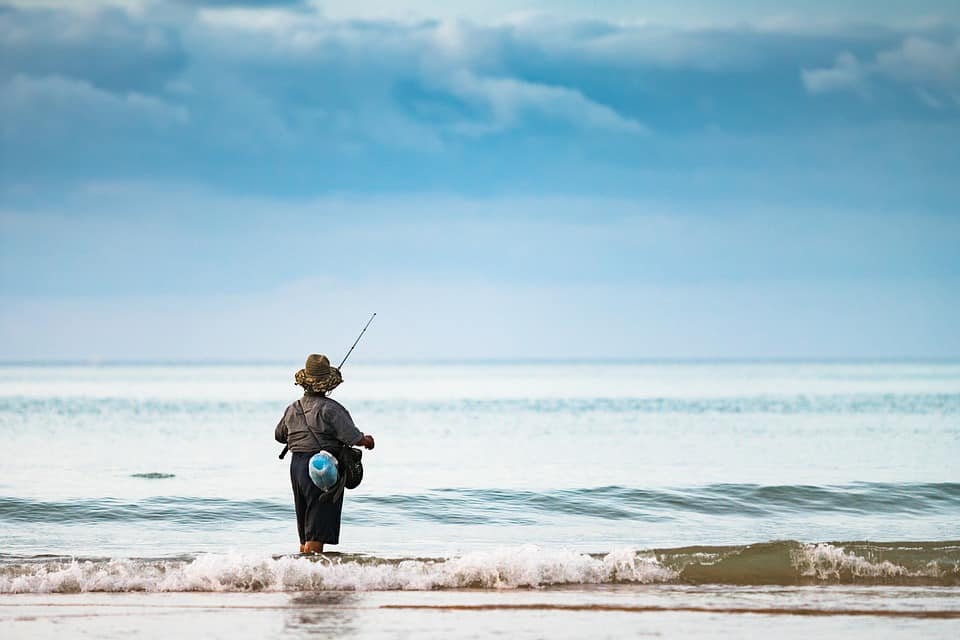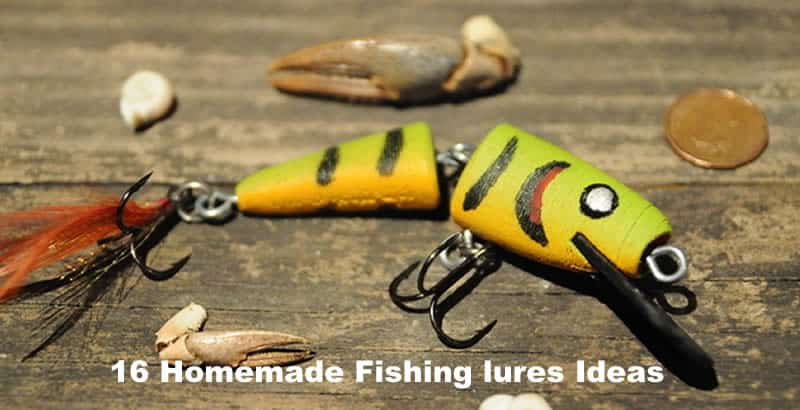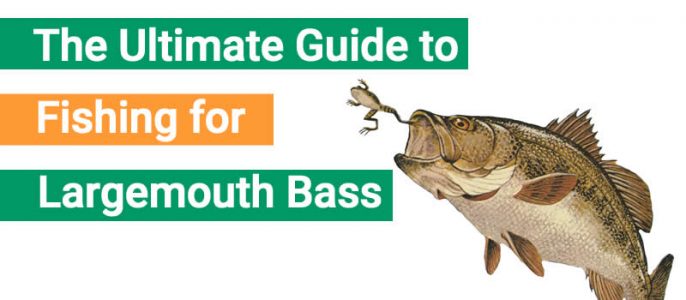If you buy via a link on this page, we may receive a commission, at no extra cost to you.Learn more
Each piece of your setup has a tremendous impact on your fishing experience. The leader is one such piece. It helps your lure to look more natural, so it doesn’t spook the fish. Hence, it is crucial to learn the basics and know what leader to use for each situation. Here, you have some handy rule of thumbs you might find useful when choosing a fishing leader:
- Common lengths between 13 to 30 inches
- Long leaders are good for:
- Long casting
- Keep the main fishing line away from the fish eyes
- Short leaders are good for:
- Precise cast
- When fishing in heavy cover
- Use the same diameter (or greater) than the main fishing line
- Use either the blood or double uni knot for line-to-line knots
- Use the Palomar knot to add leaders with swivels to the main fishing line
Of course, these are not hard rules. In the end, each angler uses what works best for him/her. In other words, it is a trial-and-error game. It could take a couple of years to find the right one if you don’t know where to start. Fortunately, you don’t need to. We’ve taken the time to summarize the basics of fishing leaders for you. Let’s begin.
Fishing Leaders: Understanding the basics

Ok, let’s start by answering some frequently asked questions about leaders in case the only thing you know about leaders is their names.
What is a Fishing Leader?
A fishing leader is a piece of line that you tie between your main fishing line and your hook, lure, or fly. It is a mandatory piece of any fly fishing setup. But it is not strictly necessary for regular anglers, although there are some situations where you should use one.
Which are the Advantages of Using a Fishing Leader?
Several are the advantages of using a leader for fishing. For instance, it helps to conceal the fishing line, making fish less likely to spot it. It also pays to add a leader if you are using lures that are prone to twist the line. The swivels will rotate with it and will keep the fishing line straight.
Fishing leaders are also useful when fighting a fish that has sharp teeth or scales. Here, monofilament or even braid fishing lines are likely to snap. Adding a wire leader is the best bet in this scenario.
Lastly, fishing leaders help you to save money. How? Well, instead of using a full spool of fluorocarbon, which is quite expensive, you simply need to add a couple of inches at the end of the monofilament or braided fishing line. This way, you will get the most out of the fluorocarbon spool and use cheaper lines as backing.
When to Use a Fishing Leader?
The short answer is ALWAYS! A fishing leader helps with lure presentation, which is something that you cannot overlook. Also, by using a leader, you will not need to cut the main fishing line every time it snaps.
Sometimes you need extra strength at the end of the line, and a fishing leader is the only reasonable way to do it. Plus, there are certain rigs, such as Carolina and Texas rigs that compel you to use a leader.
Fishing Leader Materials
Most fishing leaders are either made with fluorocarbon or monofilament. We won’t dive too deep into each one. Instead, we are going to talk about the differences between them, their pros, and cons.
Monofilament
Anglers have been using monofilament leaders since the dawn of time. It is the cheapest option you can find. So, no need to look elsewhere if you are tight on budget. But monofilament has other advantages besides being affordable.
For instance, monofilament is less dense than fluorocarbon. Consequently, it doesn’t sink as fast. Thus, if you are using dry flies, you can’t go wrong with monofilament. Still, monofilament absorbs more water than fluorocarbon does. Hence, the ability to float will deplete over time to the point that you might have to change the leader. Thankfully, as we said in the beginning, monofilament is cheap, so you can afford the change.
Fluorocarbon
Fluorocarbon fishing leaders have not been as long in the market as monofilament leaders. Nevertheless, they are widely used because it has almost the same refractive index of water, which means that it is nearly invisible. Therefore, if you are fishing from wary fish, such as trout, you should definitely use a long fluorocarbon leader to conceal the main fishing line.
But fluorocarbon leaders for fishing have a couple of extra aces in the sleeve. For instance, it has less stretch than monofilament leaders, which yields better sensitivity. As a result, you will feel even the slightest bites. Also, you will set the hook better and control the lure or fly better for the same reason. However, it is harder to tie knots.
Another advantage that fluorocarbon has is that it does not absorb as much water as monofilament leaders do. But, as we said before, it does sink faster.
What is the Best Leader Material for Fishing?
It depends on your budget and necessities. Many anglers stand with fluorocarbon, while some others prefer monofilament. Thus, the best thing to do is to try both options and see what works best for you.
We do recommend starting with monofilament, especially if you are taking your first steps in the angling world. You will save a couple of dollars. Plus, monofilament is easier to handle than fluorocarbon.
Choosing the Right Leader Size
In simple terms, a fishing leader is an extra piece of line that you add at the end of the main fishing line. Thus, the only two things that you should look into when choosing a fishing leader for bass are its length and diameter.
Fishing Leader Thickness and Pound Test:
Typically the leader weight is the same as, or greater, the main fishing line. The purpose of the leader is to enhance the setup, not make it weaker. Hence, there is no reason to use a weaker line as a leader.
The fish’s behavior and size are two things that you should also consider. For instance, big and aggressive fishes require thicker leaders.
What Leader Length Should I Use?
Typically, most fishing leaders are 13 to 30 inches long. The fish nature, fishing style, and the layout of the water determine the length you should use.
Longer leaders are more suitable for long casts. The knots are less likely to get tangled in the fishing lines. You should also go for long fishing leaders if the fish has a sharp sense of vision, especially if you are using braid as the main fishing line. This will keep the easily visible line away from the eyes of the fish.
In contrast, shorter fishing leaders are ideal for a shorter and more precise cast, like the one you do when fishing from a kayak. You will be able to control the lure better and you are less likely to hook yourself. They are also a great choice when fishing in heavily covered areas. They are less likely to get tangled with weeds or underwater structures.
Go for 30 inches if you are not sure of which length you need. You can always make a long leader shorter. But you can make a short leader longer!
How to Make a Fishing Leader for Bass Fishing
There are two simple ways of making a leader for spinning or baitcasting rods. On both of them, you’ll need a spool of line and some clippers. Let’s start with the easiest one.
Method 1:
- Cut the leader to the desired length. Make sure to leave some inches for knots.
- Use a line-to-line knot to tie the leader to the main fishing line. Either a double uni or blood knot will do the trick.
- Now, use whichever knot you want to tie the hook or lure to the leader.
As you can see, this method is quite straightforward. However, it has some flaws. For example, the leader and line are bound together with a knot. Thus, if the fish or lure twists the leader, the line will twist also.
Another problem is that you will need to cut portions of the main fishing line each time the leader breaks. This goes against one of the purposes of leaders: Avoid cutting the fishing line. Hence, we only recommend using this approach if you are a beginner or you don’t have the right tools at hand.
The next is the best of the two methods. It might take more steps. But it is worth the try.
Method 2:
- Grab some connectors, swivels, and a set of crimpers.
- Cut the line to the desired length. Remember to add a couple of extra inches.
- Pass one end of the leader through the connector.
- Add a swivel to the end that you just pass through the connector.
- Pass the end back again through the connector. You should have a loop at this point, with the swivel inside that look.
- Grab the set of crimpers and squeeze the connector. Don’t apply too much pressure, or you will cut the line.
- Repeat the same process at the other end. Now, you should have a leader with a swivel at both ends.
- Lastly, tie the leader to the fishing line. Use any knot you feel comfortable with.
The huge advantage of this setup is that if the leader snaps, you need only to replace it. There is no need to cut the main fishing line. Plus, this is a better approach altogether. It prevents line twists and increases the strength or the leader. It will take some practice before getting it right. But once you do, it is like riding a bicycle. You will never forget it.
Keep the loops loose at both ends. This will increase the action of the lure. Plus, the swivel will be able to twist as it pleases without twisting the line.
Make sure to check this video if you are facing troubles with this method
How to Put a Leader On a Fishing Line?
It will depend on how you constructed the leader. If you used the first method, we suggest using a blood knot or double uni knot to secure the leader to the main fishing line. Remember to lubricate the area before tightening the knot.
In contrast, if you are using method 2, you simply need a line-to-swivel knot to secure the leader. We recommend using the Palomar knot since it is very easy and versatile. Then, add the rest of the terminal tackle to the other end of the leader.
Fishing Leaders for Beginners
Now you have learned the basics to know which fishing leader to use and why. It might look like a lot to take in. Though, the more time you spend practicing, the better you will get at choosing leaders. So, you better stick with the fishing leader basics if you have no experience.
A leader between 13 to 30 inches long is a common choice among anglers using spinning or baitcasting rods. Large leaders are perfect for long casting or when fishing for fish with a sharp sense of vision. In contrast, shorter ones are better when fishing in water with many weeds and for precision casting.
The fishing leader’s thickness depends on the pound test of the fishing line and the fish you are after. Usually, you use a leader with the same diameter and pound test as the main fishing line. But you could face some situations where you need extra strength at the end of the line.
Rigging a leader is not hard at all. You can find several different methods. But the best approach is to use swivels at both ends. This way, if the leader snaps, you won’t need to cut the main fishing line.
Plus, leaders with swivels prevent line twists, which is fairly common when fighting against fish that move a lot. But the ultimate decision is only yours. So, hop in and share your thoughts about which is the best fishing leader!




